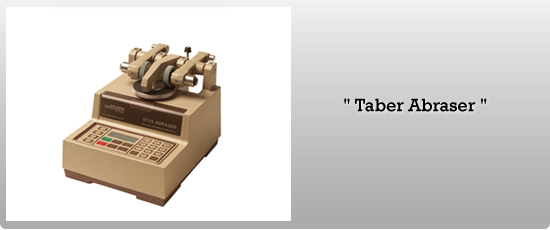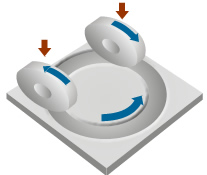The Taber Incinerator

The Taber Abraser can be used to determine the abrasion resistance of a wide variety of materials such as coatings, steels, alloys, paper, foil, leather, textiles, wood, laminates and many others. The Taber Abraser Test is an internationally recognized and standardized test method.
The abrasion stress is generated by two friction rollers which are pressed onto the rotating test specimen with a specified force. The test specimen is a circular material sample or a metal disc, which must be coated for the test from the respective substrate material or with the layer system to be tested. The friction rollers are arranged in such a way that they generate a relatively high sliding component (slip). The resulting abrasion pattern is a pattern of crossed arcs. As a result, the surface is machined isotropically.
There are numerous, differently abrasive friction rollers for the specific issues.
| Test bench parameters | ||
| Speed | 60 to 72 1/min | |
| Contact pressure | 500 g or 1.000 g | |
| Friction roller type | 5 Abrasion hardening | |
| Measured variables | Weight loss, measurement of wear depth, visual inspection |
Other tests
- ASTM C 217; C 241; C 501; C1353; D 1044; D 3389; D 3884; D 4060; D 4158; D 5342; D 5650; F 362; F 510; F 1478
- DIN 52347; 53109; 53754; 53799; 68861 T2
- EN 438-2
- FEDERAL TT-C-542;TT-E-487A; TT-P-85C; TT-P-87B; TT-P-91B; TT-P-95A; TT-P-141B
- FTMS CCC-T-191 (Methods 5306 & 5309); GG-P-455B
- ISO 5470; 9352 and ISO/DIS 3537; 4586-2; 7784-2
Possible specimen geometries
